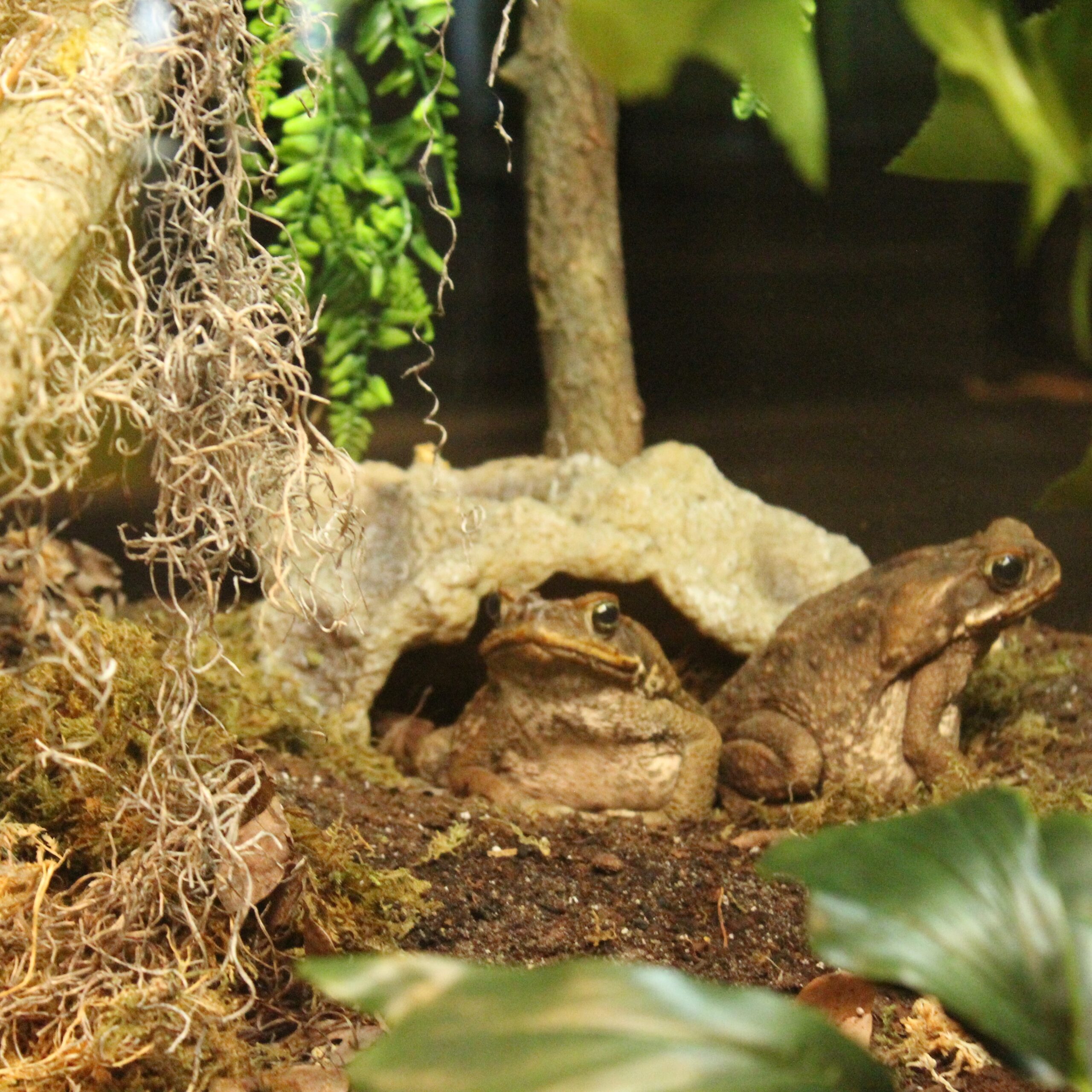
Butterfly Encounter during the construction phase
With more than 165 hands-on activities and exhibits, what more could the Connecticut Science Center offer to make visits more magical? Butterflies, of course! Thus came the idea for the Butterfly Encounter, a walk-through vivarium where curious visitors, beautiful tropical insects, and Chinese Button Quail would occupy the same space. Here was an opportunity to share the wonder of butterflies and educate our visitors at the same time.
Butterflies can teach us about many biological principles like energy flows, nutrient cycles, food webs, nested systems, life cycles (metamorphosis), and resource dependency (host plants). Butterfly Encounter also provides an opportunity to address such concepts as conservation awareness and ecological/environmental literacy.
Butterfly Encounter opened in July 2017, but the planning process for this permanent exhibit began over five years ago.

This photo shows the fog mist system in action
The space takes advantage of the Science Center’s dramatic architecture as designed by Cesar Pelli. A stunning two-story glass wall overlooks downtown Hartford, bringing natural sunlight into this tropical habitat.
Butterfly Encounter’s unique space is controlled by a sophisticated, fully-integrated environmental control system.
Butterfly Encounter has an average temperature of 80 degrees with 70% humidity. This high-pressure reverse-osmosis system provides consistent humidity; it also provides cooling on hot days through a process called evaporative cooling, which is used extensively in hot, dry climates and in greenhouses. We have all experienced this principle: when we sweat, our bodies use evaporative perspiration to cool us down. This process uses sensible heat to turn water (sweat) from liquid to vapor, to a latent heat, in turn cooling us. Try this experiment yourself: sit down in front of a fan and take a wet sponge or cloth and dampen the front of one arm while keeping your other arm dry. Place both arms in front of the fan. How does each arm feel? You will feel the difference on the wet arm as the water evaporates.
As John Bartok, Extension Professor Emeritus and Agricultural Engineer at UConn, explains in a recent article, evaporative cooling uses the heat in the air (latent heat) to change water from a liquid to a vapor. When water changes from a liquid to a vapor it absorbs considerable heat. For example, it takes 1 Btu of heat to raise the temperature of 1 lb of water 1 degree. Where it takes 1,060 Btu’s of heat to change the same amount of water to a vapor. Meaning that for each gallon of water that is evaporated, about 8700 Btu’s of heat are absorbed. This is just one example of the complex systems that are installed in Butterfly Encounter to make sure our tropical habitat will continue to grow and flourish.

Once all essential systems were up and running, the time had come to bring in our first plants. It was so exciting to see! Anyone who loves to garden knows that planting is just the beginning of a relationship. We are very close to our plants in the Butterfly Encounter; they even have names and personalities. When our beautiful plants were installed, we could only dream of how they would grow. A little magic and lots of loving care have taken them to new heights. Just look at them now!
We introduced our first butterflies in 2017, and now we have some new additions in our caterpillar rearing cage. My, how things have grown!
 What makes Butterfly Encounter so exciting? We arrive each morning anticipating the new wonder we will experience that day. You never know what’s in store when butterflies, science, and a little bit of magic combine.
What makes Butterfly Encounter so exciting? We arrive each morning anticipating the new wonder we will experience that day. You never know what’s in store when butterflies, science, and a little bit of magic combine.
The Science Center brought this exhibit to life through the generosity of our Butterfly Encounter sponsors, Mark & Luanne Paley and Roger & Sondra Beit, with support from the SBM Charitable Foundation.

Kim Kelly is the Horticulturalist and Butterfly Encounter Manager at the Connecticut Science Center. She has spent her 20 years in Connecticut at UConn Cooperative Extension and CT DEEP before joining the team at the Connecticut Science Center.


